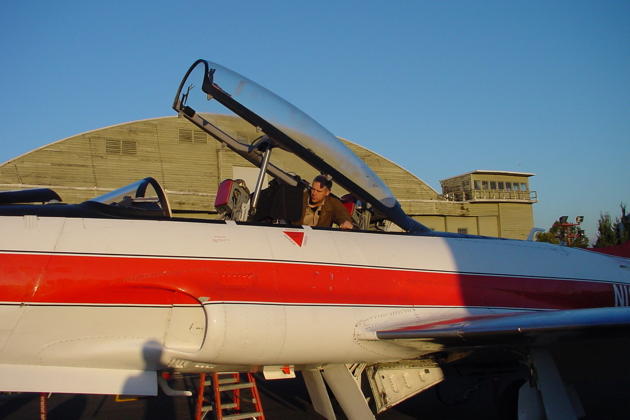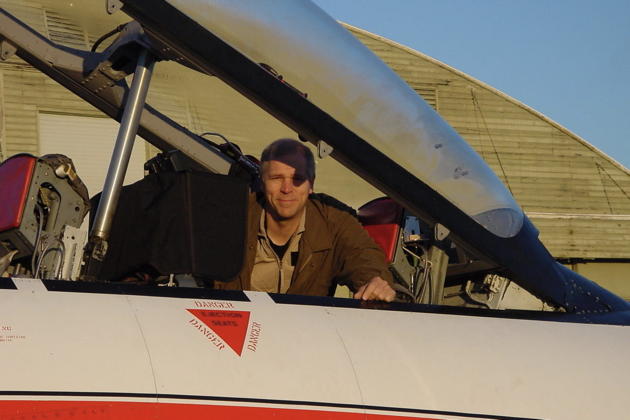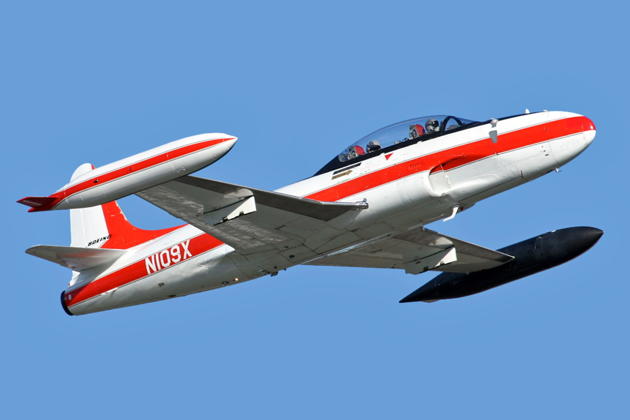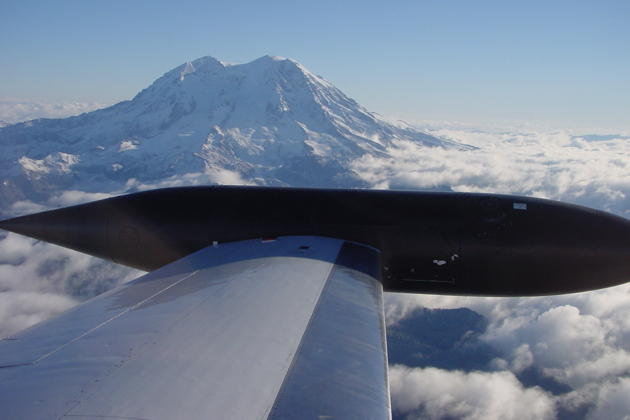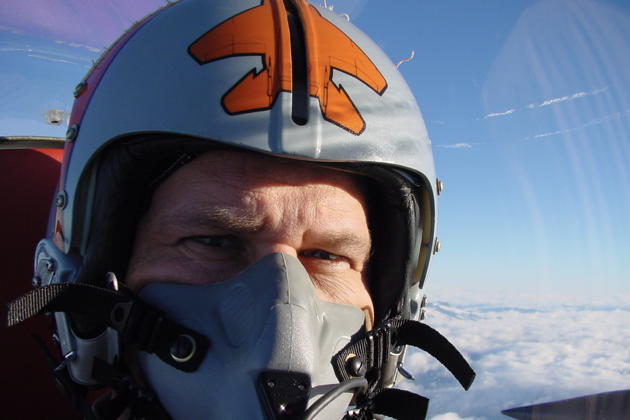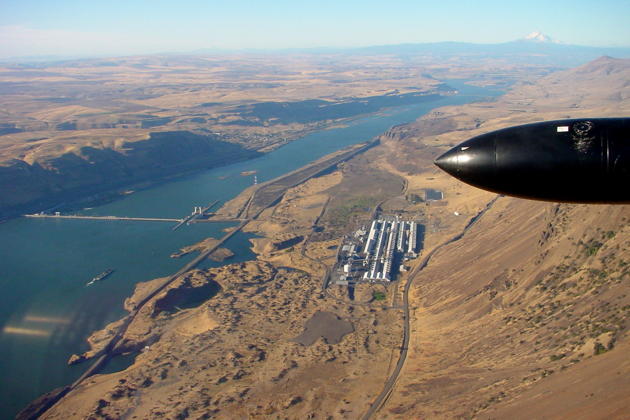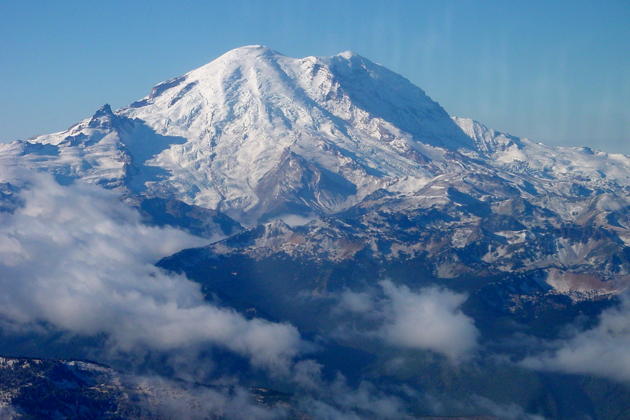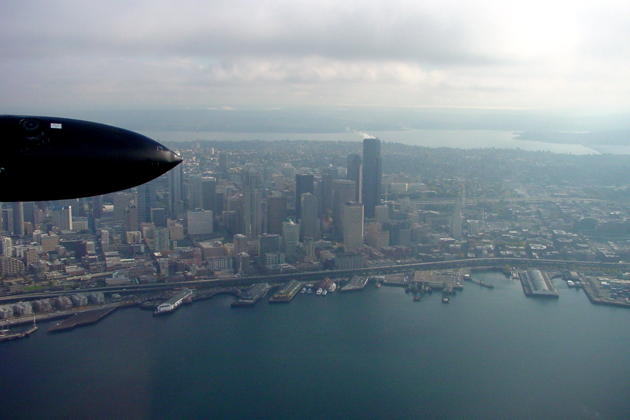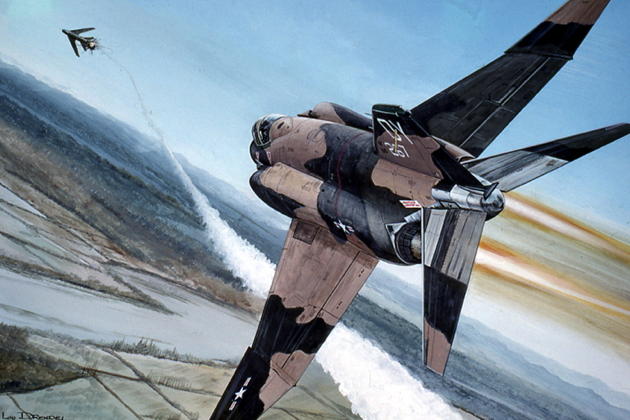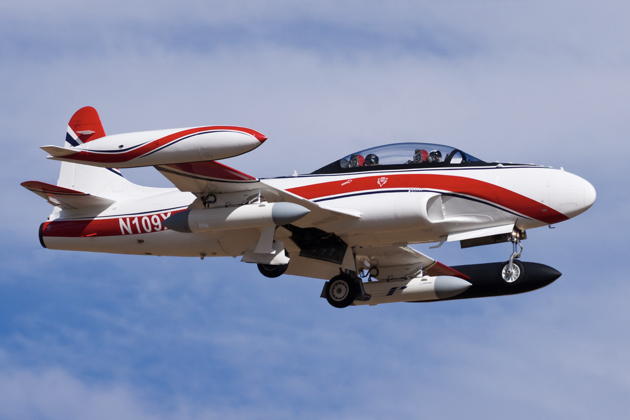FlightLog Archive
∟Aircraft Flown
Flying the T-33 Again - Oct 2001
Although I'd flown the T-33 a number of times in the 70s and 80s, it had been awhile. In mid-2001, my Cockpit design team had loaned some of our prototype 8x10 displays to a Boeing team conducting research on 'pathway-in-the-sky' techniques for pilot displays. For their flight trials, the team mounted the large 8x10 displays in the back seat of one of our Boeing-owned T-33s, registration number N109X.
N109X is a T-33 originally built in 1954 for the Royal Canadian Air Forces by Canadair. In 1951 Canadair was given a contract to build T-33 Trainers for the RCAF. The designation of the T-33 in the Canadian Forces was CT-133, and it was nicknamed "Silver Star". The power plant is a Rolls-Royce Nene 10 turbo jet instead of the Allison J33 used by Lockheed in the production of the original T-33. A total of 656 T-33 aircraft were built by Canadair. Its service life in the RCAF (and later the Canadian Armed Forces) was very long, with the Canadian Forces finally retiring it as a trainer in 1976.
The Boeing Flight Test team uses the T-33 for chase and photo duties, along with research and development projects, such as this 'pathway in the sky' research. Rich Edwards, the project lead, let me know that there was one last demonstration flight left in the test program, and I could have it. I was briefed up on the test symbology and system operation, and pre-briefed the flight with John Madden, the Boeing project test pilot, the day before.
The morning of the flight dawned cool and misty, but quickly cleared to a glorious fall day. John and I made a quick weather update, then headed outside the hangar at the north end of Boeing Field to the waiting T-Bird. The Boeing Flight Test team has kept this bird in great shape, and I quickly settled into the backseat after a pre-flight walk around with John. It sure felt good to strap on my custom F-15 helmet again after too long a layoff! Strap in was normal for a T-33, but the top of the rear cockpit panel was completely replaced with a large 8 x 10 display. John coaxed the Rolls-Royce Nene alive, and we taxied the short distance to runway 13R for takeoff.
Once cleared for takeoff, we accelerated fairly quickly on this cool morning and climbed southeast abeam Mt. Rainier, which appeared glorious above the surrounding low clouds. Pitch sensitivity felt normal, but I had forgotten the feel of the T-Bird's boosted ailerons, which tended to induce a small roll PIO (pilot-induced oscillation) until the stick feel was re-learned. A Canadian test pilot described it as follows: "The aileron boost system is horrible...the stick has a dead band in the middle - you can wiggle it side to side for about an inch, and there is absolutely no effect on the roll. The stick force is zero in this dead band. If you keep increasing the stick deflection suddenly the ailerons move a bit, but the stick force is still zero. Move the stick a bit more and now you get a normal progression of stick force vs. stick displacement. Normally someone new on the T-33 has a real hard time with the ailerons. You end up in a continuous PIO until you have a lot of time on the aircraft. Not pleasant at all." It took a few minutes, but I stopped embarrassing myself as we climbed past Mt. Rainier southbound.
For navigation, I was enjoying the large format 'pathway in the sky' presentation on the 8x10 display, which allowed me to easily nail the course and altitude that we had flight planned in, and we continued southeast bound, past Mt. Adams to the Boardman Range in Northeast Oregon. It felt great to be cruising in a jet again!
The pathway presentation allowed me to fly a smooth descent into the Boardman Range airspace, where John Madden and I reviewed the scenario profiles again. We had three runs programmed in, at 500' and 300' AGL, and the goal was to assess how well the 'pathway in the sky' could lead me on a low-level attack run and a simulated weapons drop on a specific target among a maze of derelict tanks, trucks and missile launchers on the range. I appreciated this 'air-to-ground for air-to-air guys' helping hand!
I was impressed. The combination of GPS accuracy and the very intuitive steering commands allowed me to ingress and arrive exactly at launch parameters exactly in line with the three different targets, which I confirmed by a roll at zero seconds over each target to confirm the type match. Nice system!
As I reversed course for the last time over the rolling eastern Oregon hills, I was feeling very comfortable with the T-Bird's handling. John suggested a run over the Boardman range office facility as we exited west, so I obliged with a low-level pass and rolling salute to the folks at the Boardman outpost.
Mt. Rainier was gorgeous as we returned, this time passing east of Rainier as we let down for Seattle. John took over on short final and made a smooth touchdown back on runway 13R at Boeing Field, ending a very satisfying return to jet flying after too long a layoff!
Now I just need to figure out how to get a T-33 in my garage...
Epilog
I didn't realize John Madden's Vietnam combat flying history when we flew the T-33, but I later researched details of his Vietnam MiG engagements. John has three MiG kills in Vietnam, two MiG-19s with AIM-9 Sidewinders in September 1972 with Chuck DeBellevue, and a MiG-21 maneuvering kill in October 1972 with John Pettit. Outstanding combat flying, John!
Epilog 2
Boeing's T-33 N109X received a new paint job, which does a great job modernizing the old T-Bird!
 KASPRZYK
KASPRZYK